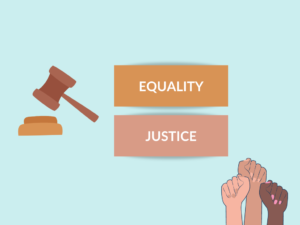Liberal vs. Leftist: Understanding the Key Differences
Politics can often be confusing, and terms like “liberal” and “leftist” are often used interchangeably. However, it is important to understand that these terms have distinct meanings and ideologies. In this article, we will explore the differences between liberals and leftists, examining their beliefs, examples, and uses. By the end, you’ll have a clear understanding of these two political positions and how they differ from each other.
What is Liberal?
Liberalism is a political ideology that emphasizes individual liberty, equality, and limited government intervention. Liberals advocate for social and political reforms to promote personal freedom and reduce social inequality. They believe in the protection of civil liberties, free-market capitalism with government regulations, and social justice.
Examples of Liberal
1. Barack Obama: As the 44th President of the United States, Obama supported policies such as the Affordable Care Act and the Paris Agreement, reflecting liberal values.
2. The American Civil Liberties Union (ACLU): This organization advocates for individual rights and liberties, including freedom of speech and reproductive rights.
Uses of Liberal
1. Liberal Democracy: Many Western countries, including the United States, Canada, and several European nations, follow liberal democratic principles in their political systems.
2. Social Reforms: Liberals often push for reforms in areas such as healthcare, education, and LGBTQ+ rights to address social inequalities.
What is Leftist?
Leftism, also known as the radical left, refers to a broad political ideology that seeks significant societal change through radical means. Leftists advocate for more extensive government intervention in the economy and society, aiming to address systemic inequalities. They prioritize collective well-being and the redistribution of wealth.
Examples of Leftist
1. Bernie Sanders: The U.S. Senator is known for his progressive ideas, including universal healthcare and free college education.
2. The Socialist Party of America: This political party promotes democratic socialism, advocating for workers’ rights and wealth redistribution.
Uses of Leftist
1. Economic Equality: Leftists aim to reduce income and wealth disparities by implementing policies such as progressive taxation and minimum wage laws.
2. Public Ownership: Leftists support the nationalization of industries, such as healthcare and utilities, to ensure equal access and prevent exploitation.
Differences Between Liberal and Leftist
| Difference Area | Liberal | Leftist |
|---|---|---|
| Role of Government | Believe in limited government intervention | Advocate for extensive government intervention |
| Economic Policies | Support regulated free-market capitalism | Promote socialism or democratic socialism |
| Equality | Emphasize social equality | Focus on economic equality |
| Individual Liberty | Value personal freedom | Prioritize collective well-being |
| Income Redistribution | Support progressive taxation | Advocate for significant wealth redistribution |
| Welfare State | Support a robust welfare state | Advocate for a comprehensive welfare state |
| Political Approach | Work within existing political systems | Advocate for radical political change |
| Foreign Policy | Emphasize international cooperation | Favor anti-imperialist and anti-war policies |
| Environmental Policy | Support regulation to address climate change | Advocate for radical environmental policies |
| Civil Liberties | Advocate for protection of civil liberties | Value civil liberties but prioritize collective rights |
Conclusion
In summary, liberals and leftists may have some overlapping beliefs and goals, but they fundamentally differ in their approaches to economic policies, the role of government, and their visions of equality. Liberals prioritize individual liberties and social reforms within a regulated free-market system, while leftists advocate for more extensive government intervention, economic equality, and systemic change.
Knowledge Check
Let’s test your knowledge on the differences between liberals and leftists:
- Which group advocates for limited government intervention?
- Which political ideology promotes socialism or democratic socialism?
a) Liberals
b) Leftists
c) Both
Answer: a) Liberals
a) Liberals
b) Leftists
c) Both
Answer: b) Leftists
Related Topics
If you found this article helpful, you may also be interested in exploring the following topics:
- The Evolution of Liberalism and Leftism
- Comparison of Liberal and Conservative Ideologies
- The Influence of Liberal and Leftist Policies on Social Welfare
Remember, understanding political ideologies helps to make informed decisions and contributes to a well-rounded perspective on societal issues.


